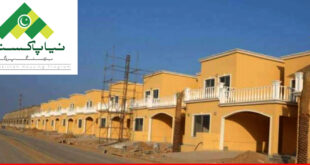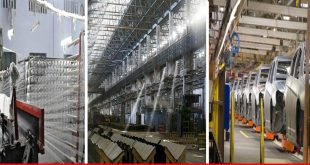Hike in steel price may stall construction activity
Utilization of Public Sector Development Program (PSPD) spending announced in Federal Budget 2014-15 worth Rs525billion, up 24 percent compared to previous one, is crucial for growth not only of the cement industry but other 48 industries allied to construction industry.
However, it is important to mention that on one hand the implementation of development plan will help construction activity and allied 48 industries but at the same time it is feared to give a serious blow to steel industry with the levy of increased sales tax on steel industry. It is quite important to have a balanced approach not only to streamline economic activity in construction, property and road infrastructure development to give a supporting hand to a number of labor oriented industries with a view to resolve the most trying issue of unemployment.
The incentives in the budget are hopefully give a historic demand to the cement industry, which is expected to operate on the available capacity while many major units are planning for expansion in the coming year.
Since cement industry expects no capacity addition in near term, the increase in demand growth will trigger capacity utilization rate at 79 percent during full fiscal 2015 from the current level of 76 percent. However, it all depends on the utilization of the PSPD as usually the budgetary allocations in this regard revised down in most of the cases and the excitement in the cement industry subsides with the reduction in the PSPD budget.
The cement dispatches to domestic markets during the month of May 2014 increased by 9.86 percent to 2.309 million tons compared with 2.102 million tons during same month last year. Exports during May 2014 were 759,000 tons against 785,000 tons during May 2013, showing decline of 3.4 percent. Total dispatches during May 2014 were 3.068 million tons compared to 2.887 million tons during same month last year showing increase of 6.3 percent.
According to latest data available, during the first 11 months of current fiscal year, cement industry dispatched 23.6 million tons in local markets posting a growth of 3.3 percent compared with local dispatches during the same period of last fiscal year that were 22.8 million tons. Exports from the country declined by 3.4 percent to 7.4 million tons compared with exports during the first 11 months of last year that were 7.7 million tons. The overall situation during first 11 months of current fiscal year showed a growth of 1.7 percent compared to the same period of last fiscal year as total dispatches increased to 31.05 million tons against 30.5 million tons from July 12to May 13.
Statistics revealed that cement dispatches exceeded three million tons for the third running month during current fiscal year creating buoyancy in cement sector that is set to register highest ever dispatches in 2013-14.
The buoyancy in the market augurs well for the sector, said a spokesman of All Pakistan Cement Manufacturers Association (APCMA), as going forward the association expects even better cement demand because of numerous development projects launched by the government and healthy allocations expected in the coming federal budget. He said the robust demand in the market depicts that the industry will end this fiscal with record sales. He said the current demand was driven by the private sector but experts expect the industry growth in coming months would be led by the public sector.
He said all this was achieved despite many drawbacks faced by the sector. He said the issue of labeling uniform prices on cement bag on zonal basis has not been resolved that is creating hardships for the consumers in remote areas. He emphasized that government needs to consider the problems faced by cement industry at large to make it competitive in international markets and increase its existence in the emerging economies.
Steel prices
Steel consumers in Pakistan are going to feel the maximum heat of austerity budgetary measures announced by the government as steel prices would go up by Rs6,000 per ton. As per budget announcement, the sales tax per unit of electricity consumed to make one ton of steel has been increase by 75 percent from 4rps per unit to 7rps per unit. Adding more pressure on prices, the government has further announced a 1 percent import duty on scrap. Majority of the steel manufacturers in Pakistan are importing scrap and the increase in customs duty will further affect the product price.
The government has also increased the sales tax on scrap from 1800rps/ton to 5600rps/ton, representing an increase of over 300 percent.
Moreover, international scrap prices (raw material) has shot up in the last quarter as shredded scrap, the benchmark used for steel makers, has increase from $380/ton CNF to $415/ton CNF, adding further pressures on steel manufacturers cost of production. The Rs6,000/ton increment in the steel prices would be a minimum cost pass over that the consumers are to feel after the budget increment. Adding further burden to manufacturers, the government has also levied GIDC on Sui gas, a key ingredient used to Reheat billets for rerolling. Gas load shedding had also increased the cost of production and this further increase of power tariff would badly affect the steel manufacturing industry in Pakistan, and consumers at large would be burdened, especially construction cost would increase substantially in the country.
ABAD Chairman South, Haris Ali Mithani notes “the increase in steel prices will adversely affect construction costs and will further burden the end user due to higher cost of living. Steel prices are fundamental to our construction costs and government must support steel manufacturers to ensure economical housing projects. Field of construction is already facing a downfall, the further increase in the prices of steel will prove to be a havoc for our economy.”
 PAGE Blog Business Weekly Magazine
PAGE Blog Business Weekly Magazine

